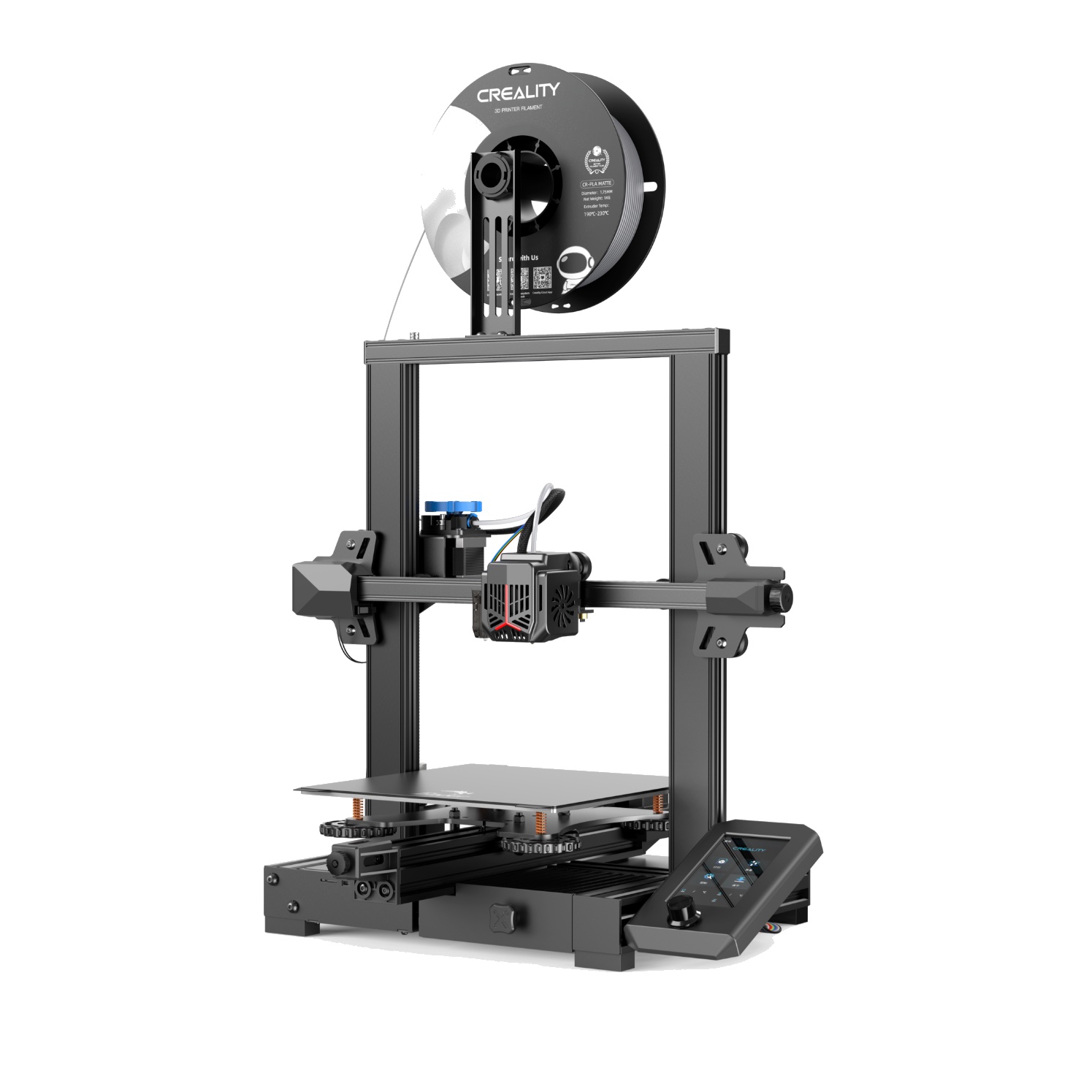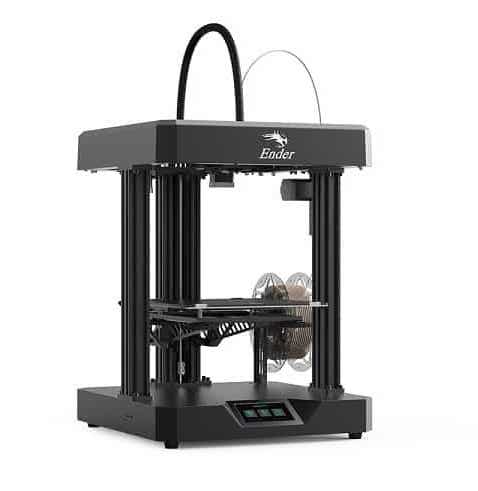Compare Ender 3 V2 Neo vs Ender 7
Comparison between the best 3D printers
Choose the best 3D printer at the best price. The cheapest 3D printers are here.
Buy a 3D printer here with 3D Fila.
 |
 |
|
| Model | Ender 3 V2 Neo[BUY Ender 3 V2 Neo] |
Ender 7[BUY Ender 7] |
| Printing Material | Filament | Filament |
| Buy Filament for Creality 3D Ender 3 V2 Neo | Buy Filament forCreality 3D Ender 7 | |
| Estimated price | $310,00 | $429,00 |
| Manufacturer | Creality 3D | Creality 3D |
| Release Year | 2022 | 2021 |
| Print Volume [mm] | 220x220x250 | 250x250x300 |
| Printer Size [mm] | 438x424x472 | 430x460x570 |
| Weight [kg] | 9,8 | 17,2 |
| Power Loss Recovery | YES | YES |
| Enclosed printer | NO | NO |
| Bed Leveling | Automatic | Manual |
| Filament End Sensor | YES | YES |
| Bed type | Heated | Heated |
| Power supply system | Bowden | Bowden |
| Standard nozzle | 0,4 | 0,4 |
| Maximum Nozzle Temperature [°C] | 260 | 260 |
| Maximum Bed Temperature [°C] | 100 | 100 |
| Maximum printing speed [mm/s] | 80 | 250 |
| Filament holder | YES | YES |
| Camera for supervision | NO | NO |
| Recommended filaments | PLA, PETG | PLA, PETG, Tritan, Flex, ABS |
| Recommended slicers | Cura, Simplify, Slic3r, IdeaMaker | Cura, Simplify, Slic3r, IdeaMaker |
| Maximum Resolution [mm] | 0,1 | 0,1 |
| Processor | 4.2.2 mainboard | Creality CR-FDM V.2.4.S1_V101 32bits |
| Display | Display touchscreen 4,3'' | Display touchscreen 4,3'' |
| Power Supply | 110/220V / 350W | |
| Connectivity | SD / USB | SD / USB |
| Operating systems | Windows, Mac, Linux | Windows, Mac, Linux |
| Date of registration in the system | 2022-12-09 | 2022-11-04 |
| Release date | 2022 | 2021 |
| Extra features | The Ender 3 V2 Neo printer stands out for its automatic bed leveling with the CR Touch system, ensuring high-quality initial layers. It features an all-metal Bowden extruder for increased durability and improved filament handling. Its flexible, PC-coated magnetic build plate makes it easy to remove prints and is durable and easy to clean. It also includes a new user interface with model preview and an updated gantry design. The Ender 3 V2 Neo maintains the same build volume and temperatures as the previous version, supporting popular filaments such as PLA and ABS. It features a quiet 32-bit mainboard and additional features such as a filament sensor, print recovery, simple 3-step assembly, an integrated toolbox, and belt tensioners. | Crealitys Ender 7 printer offers remarkable print speeds, utilizing CoreXY kinematics for precise and fast movement. With a 250x250x300mm build area, dual direct extruder, and custom hotend, the Ender 7 is capable of printing at high speeds, although quality may suffer on smaller prints. Assembly is relatively straightforward, but the machine is noisy and can get hot. Its true speed potential is most noticeable on larger prints, where it outperforms its competitors. |
| Support for multiple colors and materials (AMS and CFS) | NO | NO |
Notes * |
||
| Cost-benefit | 6 / 10 | 7 / 10 |
| Hardware | 2.4 / 10 | 2 / 10 |
| Tela | . | . |
| Print volume | 3 / 10 | 4 / 10 |
| Performance | 0 / 10 | 2 / 10 |
| [BUY Ender 3 V2 Neo] | [BUY Ender 7] |
Conclusion |
| In comparing the Ender 3 V2 Neo and the Ender 7 3D printers, several key factors emerge that can guide the decision-making process for potential buyers. The Ender 3 V2 Neo, released in 2022, stands out for its affordability and user-friendly features such as automatic bed leveling and a flexible, magnetic build plate. It offers a print volume suitable for many typical applications while ensuring consistent quality with popular filaments like PLA and ABS. The printer is lightweight, making it easier to handle, and is equipped with a quieter 32-bit mainboard. Conversely, the Ender 7 is positioned as a high-speed printer, utilizing advanced CoreXY kinematics that allow for faster printing, particularly beneficial for larger objects. Its greater build volume further enhances its capability to handle sizeable prints. However, it comes at a higher price point and has been noted to produce more noise and heat during operation. Both printers share similar connectivity options, support for a variety of operating systems, and are equipped with key features like power loss recovery and filament end sensors. They both excel in print resolution and temperature capabilities, making them versatile for a range of filament types. Ultimately, the decision hinges on the user's specific needs. If budget and ease of use are priorities, the Ender 3 V2 Neo is a compelling choice that combines good performance with valuable features at a lower cost. However, for those seeking rapid production capabilities and a larger print area, the Ender 7 may justify its higher price tag, especially in scenarios requiring frequent large-scale projects. Therefore, both are solid options, but one may be better suited depending on individual printing needs and preferences. |

